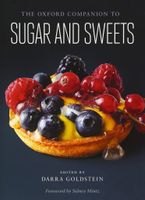Advertisement
Still Life Painting
Published 2015
Commensurate with the rise of Antwerp and, later, Amsterdam as thriving centers of sugar refinement, sugar and its progeny, sweets, began to appear with prominence and frequency in Northern still life painting around 1600. The Flemish painters Clara Peeters and Osias Beert, and their German contemporary Georg Flegel, were among the earliest to devote panels to scrupulously realistic still lifes that included such sweets as ragged comfits (nuts, seeds, or spices coated in sugar), sweetmeats, pastries, letter cookies, and even loaves of crisp, raw sugar. See comfit. Many of these early Northern still lifes contain Christian references such as wine, symbolizing the blood of Christ, or sweets arranged in the shape of a cross. See christianity. Such paintings show sugar replacing honey as a traditional symbol of spiritual sweetness, God’s abundance, and eternal life. These depictions of luxurious sweets were also intended to display wealth and status and, as such, reflected rising affluence (not unrelated to colonial ventures), and a newly emerging cultural focus on trade, consumption, and living prosperously.


